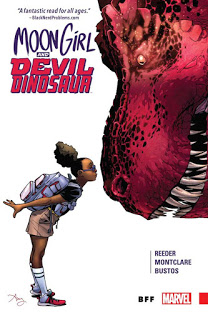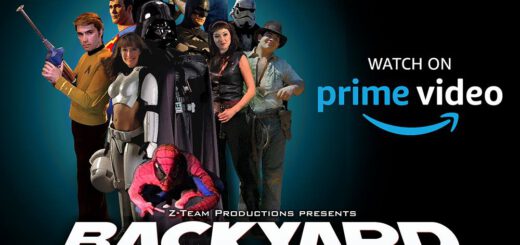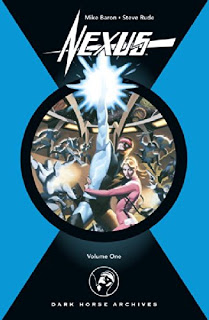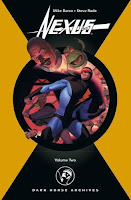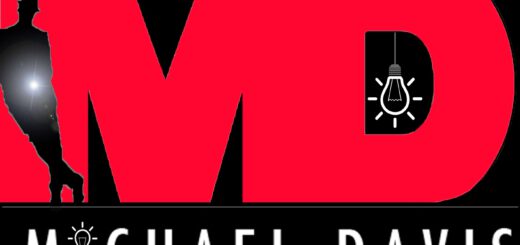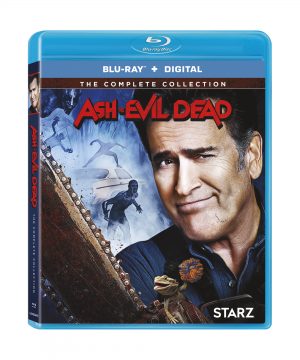From now on
These eyes will not be blinded by the lights
From now on
What’s waited till tomorrow starts tonight
Tonight
Let this promise in me start
Like an anthem in my heart
From now on
From now on
—Except from ‘From Now On’ written by Justin Paul & Benj Pasek
I am lucky
I am a con man
I am a fraud
I am uppity
I AM LUCKY:
“You’re very lucky to get even that.” The late Neal Pozner said that to me while handing me a ‘fill in’ job. It was a Captain Atom 10-page story an assignment given to me as part of my pay or play agreement with DC Comics while with Milestone Media.
Part of the agreement with DC was in exchange for devoting all our time to Milestone our standard of living would not suffer. If my Milestone income wasn’t sufficient, I could petition DC for freelance creative which they could provide or not. Either way, we got paid.
The word came back from Neal that no editor liked it and as such, they would not hire me. That’s when I knew the fix was in and I would never do work for DC again.
FUN FACT: I laid out thumbnail sketches but other than that I didn’t touch that job. John Paul Leon, Bernard Chang, and Charles Drost did the actual artwork.
“Frankly Michael, the word is that you’re not a very good artist.”
Nooooooo, John Paul Leon, Bernard Chang, and Charles Drost were not very good artists, and we KNOW that is bullshit. You may not be familiar with Charles’ work (Chuck to his pals) he’s a fine artist animation producer and director, but he’s as talented as they come, and everyone knows Bernard and John Paul are two of the biggest talents working in comics today. All three were part of my Bad Boy Studios.
So, yep the fix was in.
When Neal told me, no one wanted me because I sucked as an artist I wondered why on earth did they offer me two deluxe format projects and pay me well over a hundred grand before my name went the Moses route and was stricken.
DC: Let the name of Davis be stricken from every book and tablet, stricken from all comics cartoons stricken from every monument of the industry. Let the name of Davis be unheard and unspoken, erased from the memory of men for all time.
This surprised me because Neal and I were close until one day we just were not. I met Neal at a Gays in Comics mixer at a convention. He came over shook my hand and said, “It’s not many straight guys in comics who would attend one of these.” NO IDEA how he knew I was straight, but we ended up talking and becoming friends. After that, we would hang out together whenever we ended up at the same event.
When Neal died, I contributed his coldness to more substantial matters that affected how he treated trivial shit. He was a good guy I liked him nevertheless he was part of the DC Machine that was fucking up my shit.
I AM A CON MAN:
“Michael, I see you’ve conned yourself into yet another rather nice deal.”
Bob Wayne said that to me at Comic-Con International in 1994. I’d just been named President and CEO Motown Animation and Filmworks. I went over to the DC booth to say hello to Bob. He was loud enough so all those within earshot could (and what I thought his purpose) would hear.
This REALLY surprised and hurt me because Bob and I were buddies until one day like with Neal we weren’t.
I gave Neal a pass-why? I liked him and ‘pay or play’ means assignment or not DC had to pay me.
They didn’t. But that’s another story, and here we were talking about Bob Wayne.
Yeah, Neal got a pass. Bob, on the other hand, did not because I was livid. When I returned from Comic-Con, I wrote a very detailed letter to Bob’s boss explaining how unprofessional Bob was and how I was offended.
Realizing Bob may have destroyed any opportunity to work with another influential entertainment company Bob’s boss fired him. That act so impressed me I licensed the entire Gerry Anderson catalog to DC for a dollar. Polygram was a sister company, and I was given Thunderbirds, Stingray, and Captain Scarlet among other properties to develop. Yeah. Bob was out of a job, and I entered into a publishing deal with DC that has produced the most successful Black character in DC’s history.
HA! That will teach anyone to fuck with me.
Then I woke up.
The publisher of DC didn’t even respond. He and Bob most likely laughed their asses off. OH, wait a sec, you’ll don’t know Thunderbirds, Stingray, and Captain Scarlet was among the universes I had dominion over?
I AM A FRAUD:
At the very same convention that Bob Wayne thought he had dominion over me, I ran into Howard Chaykin. Howard was a friend who I idolized when younger. Not just because of his fantastic work his badass take no prisoner attitude had a significant influence on me
His reaction when I told him the news of becoming President and CEO of Motown film and TV. Hell, he was a friend— what do you think he said to me?
“What? But you’re a fraud!”
Well, I thought he was a friend.
I AM UPPITY:
“You get in people’s faces.”
“You’re loud.”
“Who do you think you are?”
SOOOOOO many people pros and fans alike have said the above to me and MUCH MUCH more.
Howard Chaykin invented getting into people’s faces. No one is louder than Todd McFarlane.
Who do they think they are?
I’m willing to bet those guys don’t get questions on their pedigree.
There are two distinct differences between Howard, Todd and me.
- They are way more well-known than me.
- Really? Do I have to say it? OK, I will, my dick is bigger, and I can dance. (watch some idiot not get the joke)
Now there are those will say they are more accomplished than me.
Maybe.
Maybe not.
Depends on how you measure accomplishment.
Now would be a good time to tout my resume. Nah. Not gonna do it. I’ll just ask is there a Howard Chaykin auditorium somewhere or do they only give those to frauds?
Just askin’.
Here’s my question-what gives anyone the right to call me a fraud when they have no fucking idea what I’ve done? Or call me lucky when made aware something I’ve done?
Or say:
“You get in people’s faces.”
“You’re loud.”
“Who do you think you are?”
All that my friends are code for uppity, short for Uppity Nigger. Fraud? That’s when people have no respect for you. I can’t explain why Howard said that to me and that shit HURT. What did I say?
Not a damn thing.
I’m nobody’s bitch I’m not afraid of Howard but he may have forgotten the snowed in night at UP START STUDIOS when he spent a great of time giving me advice and showing real concern.
It was just he and I from around 9pm until well after midnight. This stands out as one of the best memories of my best memories because all the time he was talking to me he was inking AMERICAN FLAGG.
FUCKING WOW.
He may have forgotten, I haven’t.
So, no I didn’t say a word.
There’s a company that took their objection to my swagger personally. I say company because when the little bitch who started it all left the company, I thought the stupidly went with him. I just found out it didn’t.
This asshole produced a document that is so damning he thought when I signed it he had successfully killed my career. Why would I sign such a document?
Because MY lawyers who come from one of the most powerful law firms on the planet say it’s unenforceable and those who produced it were fools to do so. It shows an absolute bias against me.
Right now, the punk ass bitch who put this shit together is thinking ‘statue of limitations’ That would be a concern if I signed outside of those limitations.
What, me worried?
It’s not like I had called the character Tyrone Cash Super Nigger. Cash was a brilliant black scientist who gains the powers of the Hulk, KEEPS HIS INTELLECT, then decides to give up his job as a brilliant scientist TO BECOME A DRUG DEALER.
He solved a problem that Dr. Doom, Reed Richards, Hank Pym and every other big brain in the Marvel Universe couldn’t. That makes him the smartest person in the Marvel Universe. That means the most intelligent BLACK person in the Marvel Universe thinks being a fucking DRUG DEALER is a worthy endeavor.
This idea was created by superstar creator Mark Millar.
It’s not like I called Mr. Millar’s creation ‘Super Nigger.’ THAT would be a reason to worry.
Shit. I did call Tyrone Cash, Super Nigger. But Mark, if you’re reading this, don’t get mad. It’s not like I called you a fraud or asked who you think you are.
BTW-does one stupid character negate your other work?
No. You’re still a brilliant writer, but TC is as FUCKED UP as FUCKED UP can be.
But (HOWTHEHELLYOUDOINPETERDAVID?) I digress.
Am I worried about outing the nincompoops who think they have the right to treat me like my name was Toby?
Nah.
I’m looking forward to their explanation. Then they can also explain why they produced that document AFTER two employees SWORE I’d called their company racist. Funny thing about that those representatives of this massive entertainment corporation. They were not mistaken, they were not wrong they were not incorrect.
They were LIARS.
It was a setup. Yes, I’ve got proof and so does Ropes and Gray.
Explain THAT.
Why am I dealing with this at all when I let it go for so long? Truth is this isn’t the first time I’ve written about these things— this time it’s different because I made a promise to my cousin Regina a few months ago.
After reading my articles for the last 25 years, she noticed I’m no longer ‘getting in people’s faces when they fuck with you.” She also noticed I’m not happy nor am I, “Being the badass take no shit from no one we all love and shake our head at.”
She said it was my duty to show young kids of color if wronged bring attention to that wrong. People always want Black men to show their papers we both agreed that was still a problem, if not you’re a fraud or lucky and if you’re confident about your ability, you’re uppity.
Regina was my biggest fan, she was family.
On the one-year anniversary of Len Wein’s death, before I could post my article marking that sad occasion my beloved cousin, Regina Keesley passed from this earth.
I made a promise to Regina that I would no longer tolerate those who question my intelligence or doubt my resume.
OR are stupid enough to FUCK WITH ME.
Ice Cube said; “I’m the wrong nigga to fuck with” and so am I.
I’m off to NYC for Regina’s service. I intend to tell her face to face I’m gonna keep my promise.
Funny, I’m going to show some folk my papers, just not the ones they expect.
I’m trying not to duplicate what I write. Bleeding Cool, ComicMix, and Pop Culture Squad have all run the same article at times. Not my intention— I want each entity to have exclusive content from me.
This article is exclusive to ComicMix.
I’m writing a series of articles called “The Ugly Side of Comics” at Bleeding Cool. I see “Confessions of An Uppity Negro” as a sister series but as original to ComicMix as “The Ugly Side of Comics” is to Bleeding Cool. I hope to start a series at Pop Culture Squad soon. Working title “Not Me.”
—Michael Davis
LAX, 9PM, Sunday, Sept. 15, 2018
![]()
![]()

